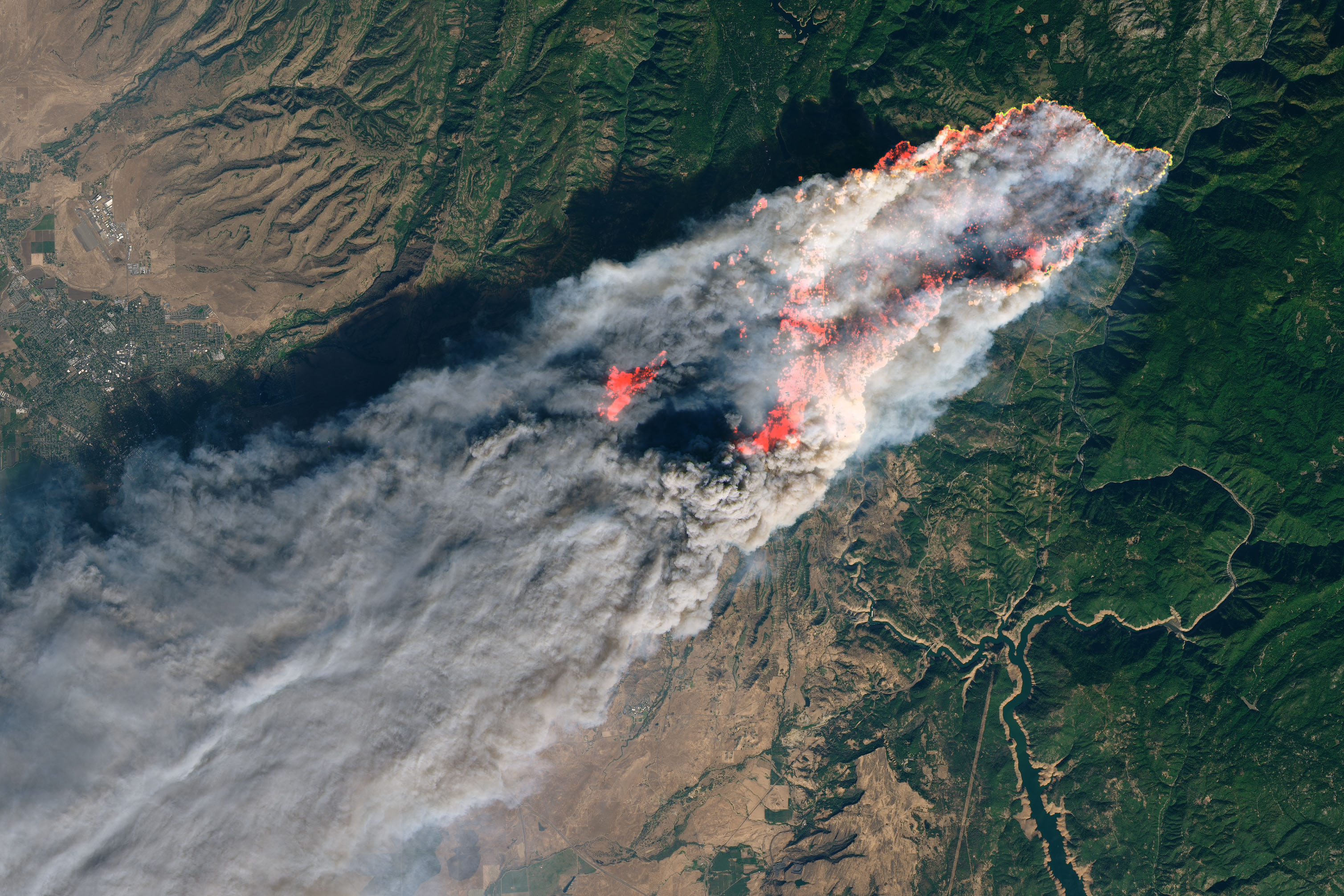
June 2023: Canada is on fire (below are links to help). Canadian wildfires have consumed 9.4 million acres (3.9 million hectares) – 15 times the average over the past decade. Quebec fires forced 11,000 residents from their homes; Nova Scotia suffered the largest blaze in its history. The East coast is not alone: Western British Columbia battled the second-biggest wildfire on record for the area. In Central Canada, Alberta issued evacuation orders and heat directives. Canadian railway CN is adjusting trains in several provinces. Why? Drought dries forests and heat sparks blazes. While wildfires are normal in nature, hence the term “wildfire season,” climate change is intensifying the threat to land, cities, and public health.

No longer are fires, and related smoke, a local danger. Just south of Canada, winds blew smoke into the air of Vermont to New York to South Carolina, and then westward to Ohio and Kansas. New York City’s iconic skyline was cloaked in soot. Satellite images show the movement of smoke over Manhattan.

The year 2023’s fire season is just beginning in North America. If recent years are a warning, it is time to take precautions. In 2022, wildfires in California, Oregon, and Washington state consumed thousands of acres, destroyed homes and agricultural land. Canadian British Columbia battled 193 wildfires in 2022, sending smoke to Vancouver and also to Seattle, Washington. Wildfires have become so frequent that they often have names: Sandia, Red, Tower, Mountain, Dixie, Camp. The latter, in 2018, burned 153,000 acres (62,000 hectares), killed 85 people, and destroyed the entire town of Paradise, California.

Wildfires are a global threat. Australia’s wildfires in 2020 spiked atmospheric temperatures and even widened the hole in the ozone layer. Fires threatened Snowy Mountains Hydroelectric‘s largest generator Tumut 3. During China’s 2020 heatwave, the city of Chongqing, home to 32 million people, relocated 1500 residents due to fires erupting. Factories suspended work for seven days. In 2022, Hunan province closed its mountain access for one month to help 4,000 firefighters battle a blaze.

As global space-based observation progresses, we may be able to predict wildfires. The European Forest Fire Information System (EFFIS) reports on European Union countries. EFFIS uses satellites in concert with the Copernicus Atmosphere Monitoring Service (CAMS) to observe active wildfires and estimate air quality pollution. Then, CAMS coordinates with the Global Fire Assimilation System (GFAS) to predict where the wind will blow fire pollution, sending warning to cities. Another space-based monitoring system is CAMS Biomass Burning Aerosol Optical Depth measuring how much sunlight can pass through the air (or not), indicating concentrations of particulate matter.

Particulate matter (PM) is the term for mixture of solid and liquid drops of pollutants suspended and carried in the air. Particles can be made of inorganic and organic compounds including soot, metal, dust, soil, pollen, mold, and little flakes of burnt matter. Small particles can be inhaled, enter the lungs and pass into the bloodstream. The tiniest particles, those less than 2.5 micrometers in diameter and known as PM2.5, are the most dangerous.
How can you tell if your local air’s PM2.5 might be at high levels? Look out any window. If air is hazy, and wind is relatively still, there is danger. Here are actions to take:
Preventing Wild Fires and Related Damage – manage forests, limit residential plantings needing extensive water, build new construction with fire-proof or fire-resistant materials, use satellite data to anticipate fire-prone areas and take preventive action.
Preventing Health Risks due to Fire and Smoke – remain indoors, do not open windows, use an air-filter device if available, cancel unnecessary outdoor exposure. If you do need to venture outdoors, wear an N95 mask (or two), and when returning, remove and launder outerwear garments that may harbor toxic residue.
Providing Help to Those Impacted by Canadian Wildfires – fires have displaced 20,000 people, destroyed property, and sent many to the hospital for smoke inhalation. Here’s some ways to help:
Canadian Red Cross – every dollar donated will be matched;
Firefighters Without Borders – support international and Canadian firefighters;
Donate a Mask – help a charity that distributes free N95 masks.
In the future, climate response will mean addressing, especially, the shared resources of the global commons. These include areas that lie beyond national jurisdiction: the high seas, outer space, and the atmosphere – the very air we breathe. Wildfires may erupt in a specific place, but winds that circle the globe bring “there” to “here.” As we respond to problems we face today, let us keep an eye on a better, cleaner, more equitable future.
But still, like air, I’ll rise. -Maya Angelou
Brooke, K. Lusk. “Designing residential and commercial communities in the age of drought and wildfires.” Renewing the World: WATER. Success Casebook. 2023. ISBN: 9798985035933.
Coleman, Jude. “Australia’s epic wildfires expanded ozone hold and cranked up global heat.” 1 September 2022. Nature. https://www.nature.com/articles/d41586-022-02782-w
European Forest Fire Information System (EFFIS) https://effis.jrc.ec.europa.eu/
Global Commons Alliance. https://globalcommonsalliance.org/global-commons/
Stack, Liam, Mike Ives, and Kevin Williams. “Here’s the latest of the widespread effects of the smoke in North America.” 8 June 2023. New York Times. https://www.nytimes.com/live/2023/06/08/us/canada-wildfires-air-quality-smoke
Williams, Nia. “Wildfires burn across Canada with little relief in sight.” 8 June 2023. Reuters. https://www.reuters.com/world/americas/wildfires-burn-across-canada-with-little-relief-sight-2023-06-08/
Building the World Blog by Kathleen Lusk Brooke and Zoe G. Quinn is licensed under a Creative Commons Attribution-NonCommercial-NoDerivs 3.0 U
